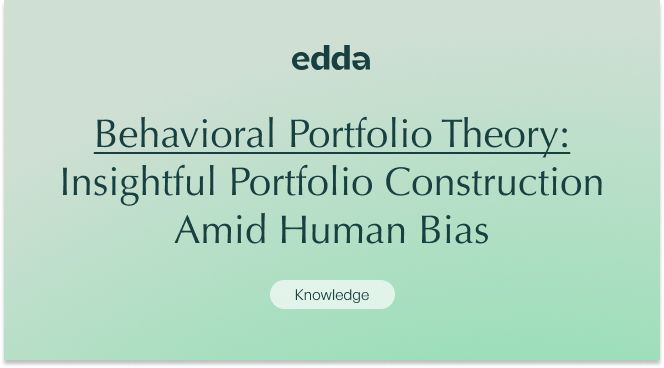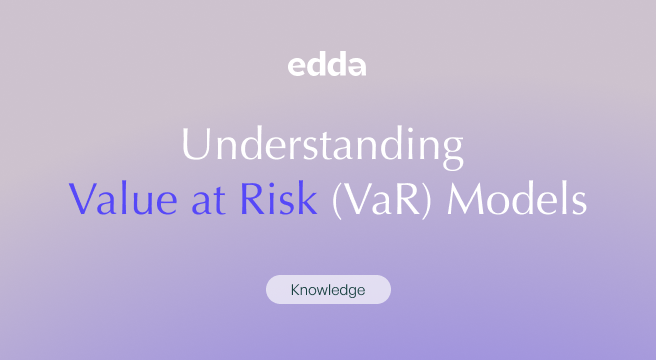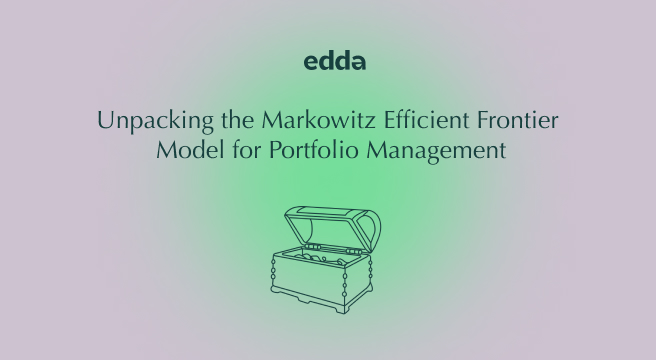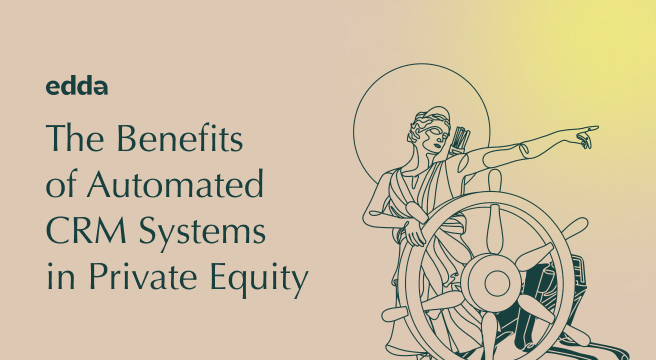Behavioral Portfolio Theory (BPT) peels back the layers of investor psychology, acknowledging that human biases frequently skew financial decision-making.
This approach examines the often irrational influences on investment choices and offers strategies to construct portfolios that not only consider financial objectives but also the human element behind decision-making. The theory posits that emotional responses and personal biases can lead to suboptimal investment choices, underscoring the need for a framework that accounts for these psychological factors.
This article explores the mechanisms of BPT, aiming to illustrate its principles, its application in crafting investment portfolios, and its potential to inform better investment outcomes.
Additionally, it considers the integration of innovative venture capital deal flow software that can aid investors in recognizing and mitigating the impact of their biases, fostering more grounded and effective investment strategies.
The Framework of Behavioral Portfolio Theory
BPT diverges from conventional financial theories by incorporating psychological dimensions into portfolio construction, recognizing that investors often make decisions based on emotions and cognitive biases rather than strict rationality.
Unlike models that focus purely on the statistical probabilities of returns, BPT aims to create a more realistic framework for understanding and predicting investor behavior:
Investor Classification: Investors are categorized based on behavior patterns, such as their reaction to gains or losses and their attitudes towards risk. This can be informed by psychometric assessments or historical investment behavior analysis.
Aspiration Levels Identification: BPT posits that investors have distinct layers of goals or “aspiration levels” ranging from securing basic needs to more ambitious growth targets. Each layer corresponds to a different component of the portfolio.
Layered Portfolios: Based on the identified aspiration levels, investors construct separate ‘layers’ or ‘sub-portfolios’. Each layer is optimized independently, according to the risk-return characteristics that align with the corresponding goal.
Safety and Aspirational Assets Allocation: The lower layers are typically composed of safer assets to ensure basic goals are met with high probability, while higher layers might contain riskier assets with potential for higher returns.
Behavioral Adjustments: The theory adjusts for common cognitive biases—like overconfidence or loss aversion—by tailoring the asset allocation within each layer. For example, an investor prone to loss aversion might have a larger safety layer compared to an overconfident investor.
Simulation and Analysis: Through simulations, each layer’s performance is forecasted under various market scenarios. This helps in understanding how the portfolio might behave in different conditions, factoring in the psychological profile of the investor.
Optimization and Balance: The final step involves balancing the layers to achieve an overall portfolio that reflects both the financial and emotional needs of the investor. This typically requires iterative adjustments and continuous monitoring to ensure the portfolio remains aligned with the investor’s changing psychological profile and market conditions.
Crafting Investment Strategies Aligned with Human Psychology
BPT injects a layer of psychological nuance into investment strategy formation, accommodating the often non-rational decision-making patterns of investors. Its application fosters investment strategies that resonate with the investor’s psychological makeup, financial objectives, and tolerance for risk, addressing the emotional and cognitive biases that frequently influence financial decisions.
Here’s how the application of BPT can manifest in investment strategies:
Psychologically Attuned Portfolio Construction
Utilizing BPT, financial advisors can construct a financial portfolio that not only aligns with the client’s financial aspirations but also take into account their psychological risk profile. For example, a client with a keen aversion to losses might be comforted by a portfolio that allocates a substantial proportion to bonds and other fixed-income securities, ensuring a safety net against market downturns.
Calibration of Aspirations and Risk
BPT allows for the adjustment of the portfolio’s asset allocation by gauging the intensity of the investor’s financial ambitions against their behavioral tendencies. An investor with high aspirations but a tendency towards risk-averse behavior may need a careful blend of conservative income-generating assets and selectively chosen growth-oriented securities to satisfy both dimensions.
Behaviorally Informed Asset Distribution
Advisors leveraging BPT can guide clients towards a distribution of assets that counters potential behavioral biases. For instance, to mitigate the impact of overconfidence, a portfolio might diversify across a broader range of asset classes, reducing the potential for disproportionately large bets on high-risk, high-reward investments.
Strategic Response to Behavioral Tendencies
BPT-influenced strategies actively consider the investor’s reactions to market changes. Should an investor display sensitivity to market swings, the portfolio can be structured to include assets that exhibit lower volatility, thereby potentially reducing the frequency and intensity of the investor’s stress responses during periods of market upheaval.
The Challenges of Applying Behavioral Portfolio Theory
BPT, though providing a significant advancement in aligning investment strategies with investor psychology, encounters several substantial obstacles that affect its application in portfolio management.
Subjectivity and Quantification Issues
A central hurdle in applying BPT is the difficulty of accurately quantifying individual behavioral biases. While BPT aims to account for psychological factors, the subjective nature of these elements can lead to arbitrary or misaligned portfolio structuring. Determining the exact influence of an investor’s fear or overconfidence requires a level of psychological insight that is challenging to standardize and measure.
Predictive Inconsistencies
BPT is predicated on the premise that investors’ behavioral patterns are consistent and predictable, which is often not the case. Human behavior can be erratic, influenced by external factors and internal changes in perspective or emotion. This inconsistency can render a BPT-aligned portfolio ineffective if the investor’s behavior changes over time, necessitating continuous monitoring and adjustment.
Overemphasis on Behavioral Factors
There’s a risk of overemphasizing behavioral considerations at the expense of sound financial principles. For example, catering too closely to an investor’s risk aversion might lead to an overly conservative portfolio that fails to meet growth targets. Striking the right balance between psychological comfort and financial efficacy is a nuanced task, and BPT does not always provide clear guidance on managing this trade-off.
Complex Emotional Responses
BPT strategies may underestimate the complexity of emotional responses to market events. For example, an investor may react differently to the same type of loss depending on external circumstances, recent experiences, or even their mood. BPT models that do not accommodate this variability may not fully capture the true risk profile of an individual.
Implementation and Adaptation
From an operational standpoint, integrating BPT into traditional investment processes can be challenging. Financial institutions are generally structured around quantitative data and clear-cut risk assessments. BPT’s more qualitative and fluid approach may require a cultural shift within organizations and new systems for data collection and analysis.
Incomplete Risk Profile
BPT may not capture the full spectrum of risks because it tends to focus on the risks that investors are most concerned about. This selective sensitivity might lead to the oversight of other, less salient but equally impactful, risks. For instance, systemic risks that do not trigger immediate behavioral reactions may be underrepresented in a BPT framework.
Despite these limitations, BPT represents a significant step towards understanding the impact of investor psychology on portfolio design. However, it should be employed with a critical eye and supplemented by rigorous financial analysis to ensure that investment strategies remain robust and aligned with both psychological and financial objectives.
Optimize Your Investment Strategy with Edda
Edda’s VC portfolio management software provides indispensable tools for investors utilizing BPT in their asset management strategies. The platform is equipped with advanced deal scoring features that facilitate the thoughtful integration of individual behavioral biases into the investment decision-making process.
Leveraging Edda’s sophisticated dealflow management software, investors can fine-tune their due diligence scoring effectively incorporating their personal risk preferences and behavioral considerations into the broader economic investment opportunity.
Edda’s venture capital software is particularly beneficial for investors seeking an adaptable yet meticulous toolset to support an investment approach that respects the psychological dimensions of BPT.









